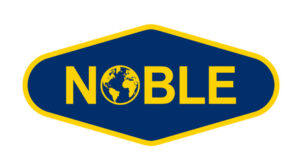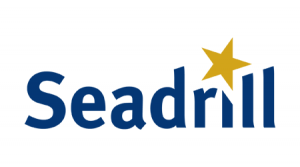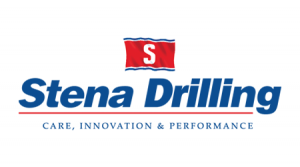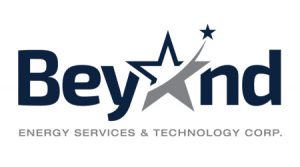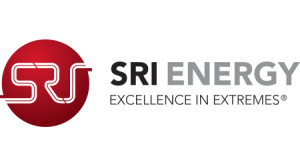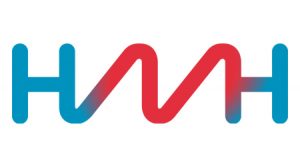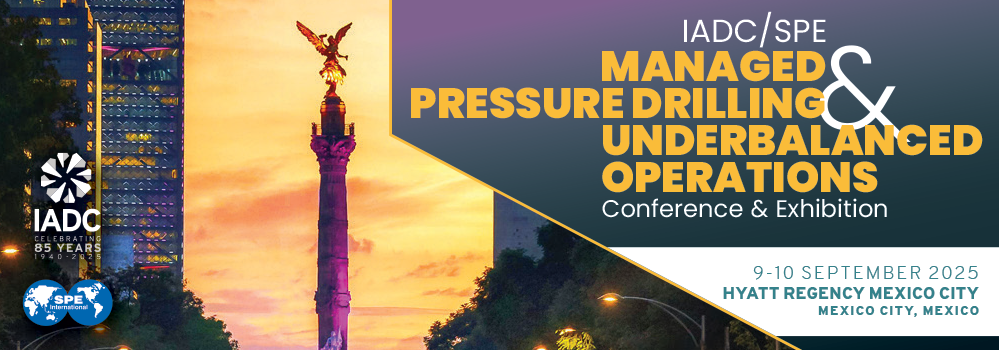
SPE and IADC are pleased to announce the IADC/SPE Managed Pressure Drilling & Underbalanced Operations Conference & Exhibition. Technologies designed to control annular pressure during drilling, inclusive of Underbalanced Drilling, Managed Pressure Drilling and Dual Gradient Drilling are being used in many forms around the world. UBD continues to maximize reservoir performance, while MPD techniques spanning onshore performance drilling and offshore deep and shallow water prospects serve to enhance drilling safety and minimize NPT. Once considered a futuristic technology, DGD is now a reality with numerous wells drilled, and many exciting prospects on the horizon. New applications of these drilling practices take place every year, and their frequency continues to grow. This conference is a world recognized forum to help the energy industry better understand the technology and the effective, safe utilization of the various applications of UBD, MPD and DGD.
Photos From Last Event
2024 Event Demographics
Registrants by Job Title
- Management
- Training/Education
- Drilling & Completion Engineer
- Company Owner/Corporate Officer
- Completion Engineer
- Drilling and/or Completion Operations
- Drilling Engineer
- Student
Delegates
Exhibitors
Registrants by Location
- Registrants
Registrants by Company Type
- Equipment Manufacturer
- Government
- Land/Offshore Drilling Contractor
- Land Well Servicing Contractor
- Land/Offshore Well Servicing Contractor
- Major Oil Producer
- National Oil Company
- Oilfield Service/Consultant
- Training
2023 Event Demographics
Registrants by Job Title
- Management
- Training/Education
- Quality, Health, Safety & Environment
- Drilling & Completion Engineer
- Geologist/Geophysicist
- Company Owner/Corporate Officer
- Completion Engineer
- Drilling and/or Completion Operations
- Drilling Engineer
- Student
Delegates
Exhibitors
Registrants by Location
- Registrants
Registrants by Company Type
- Equipment Manufacturer
- Government
- Independent Oil Producer
- Land Drilling Contractor
- Land Well Servicing Contractor
- Land/Offshore Well Servicing Contractor
- Major Oil Producer
- National Oil Company
- Offshore Drilling Contractor
- Oilfield Service/Consultant
- Training
We thank you for your support!
The International Association of Drilling Contractors (IADC) is a non-profit organization. Income from this event will be invested back into other IADC initiatives we develop to serve the drilling industry to connect, share knowledge, tackle common problems and develop solutions to critical issues in different parts of the world. By participating in an IADC event you will be improving and supporting your own industry.
IADC provides web links as a member service. IADC does not warranty or endorse the accuracy or reliability of any of the information, content, or advertisements contained on websites linked to IADC.org or any of its subsidiary pages.
Venue & Hotel
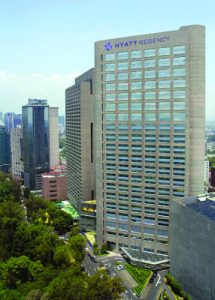
Hyatt Regency Mexico City
Address Campos Eliseos. 204 Polanco Chapultepec, 11560 Mexico City, Mexico
Phone +52 55 5083 1234
Negotiated Room Rate $230
Single/Double Occupancy
*Discounted room block rate expires on Wednesday, 27 August 2025. Please make your room reservations directly with the hotel prior to cut-off date.
Registration Information
*Advanced registration for this event has closed. Please see IADC staff onsite at the conference to register at the door.
Registration fee: IADC Member $750 Non-member $937
NOTE: IADC has updated our wire account. If sending payment via wire, please ensure you use the account listed on the above registration form.
Press Policy
Complimentary press registration is limited to one (1) person per company. This individual must be a titled editor, writer, reporter or other bona fide editorial representative of a legitimate industry or consumer publication. Publishers and sales and marketing specialists are excluded from this complimentary registration practice and must pay the full conference registration fee to attend an event.
No unauthorized photos, videos or recording allowed.
Recording in any form (audio, video, still photography, etc.) of presentations and/or speakers during sessions, poster presentations, workshops, etc., without the express written consent of IADC and the party to be recorded is strictly prohibited. *Those who do not comply with the Recording Equipment/Photo policy may be asked to leave the premises and barred from receiving complimentary press registration for future IADC events.
Press registration must be received 1 week prior to the event to ensure entrance. Members of the press will be identified with a green press ribbon attached to their name badge.
Need Help? registration@iadc.org / + 1.713.292.1945
Conference Program
Tuesday, 9 September
7:20 am Registration, Coffee Service & Exhibit Viewing Ballroom Foyer & Ballroom AB
7:30 am Speaker Briefing (Speakers, session chairs & moderators only) Ballroom C
8:20 am Welcome, Introduction & IADC UBO/MPD Committee Update Ballroom C
- Oscar Gabaldon, Blade Energy Partners; Chair, IADC UBO & MPD Committee
8:30 am Lessons Learned / Case Histories
Session Chair: Martyn Parker, Vice President – MPD Services, Pruitt
MPD Case History from the Extreme HPHT Fenris Field on the Norwegian Continental Shelf: Ragnar Marcelius Fredriksen, Advanced Drilling Engineer, Aker BP, Alexander Tokoi, Technical Superintendent – MPD, Noble, Siri Sandvik, MPD Principal Technical Professional, Halliburton (SPE 228370)
MPD case history from a extreme HPHT field on the Norwegian continental shelf. MPD was used to help set 12 1/4″ TD into the HPHT pressure ramp, drill a narrow operational window in the reservoir section and increase chances of obtaining good cement around the reservoir liner utilizing managed pressure cementing.
Reliability of MPD System Reliability – How to Guarantee Primary Barrier Envelope: Ivan Sales, MPD Advisor, Petrobras (SPE 228371)
To unlock MPD full potential, MPD system needs to be fail proof when it is part of first barrier envelope. The focus should be in equipment and control systems that can lead to underbalanced situations. This paper presents historical data from over 100 drilled wells to analyze the major contributors to primary CSB integrity failures.
Installation of Managed Pressure Drilling Technology in an Integrated Platform – Challenges and Lessons Learned: Nicolas Gutierrez, Wells Advisor, Sean Stright, Wells Engineer, M. M. Woodfine, ExxonMobil Canada, and S. Borges, Beyond Energy Services & Technology (SPE 228372)
This paper discusses the challenges and lessons learned from the first installation of Managed Pressure Drilling (MPD) technology on an integrated platform. A substantial amount of technical work was completed by a multi-discipline team on the planning, design and installation of the MPD system, facilities modifications and required interfaces to meet local regulations and guidelines as well as Industry and Company Standards.
10:00 am Coffee Service & Exhibit Viewing Ballroom AB
10:30 am New Technology / Technology Advancements
Session Chair: Matt Kvalo, VP of Engineering & Technology, Stasis Drilling
Changing the Status Quo: James Young, Director Well Control Equipment, Brian Clelland, Seadrill, Tom Roberston, Oilstates International
This presentation will outline how Seadrill, Oilstates, and Frontier have joined forces to successfully qualify and deploy a cutting-edge integrated riser joint and URCD with a major operator. It will highlight the key advancements of this new riser system and compare it with existing systems in real-world applications.
Kinetic Pressure Control: SGV Technology for Applied Back Pressure MPD on Floating Rigs: Reese Jones, VP Business Development, Kenneth Dupal, Kinetic Pressure Control, Drew Ryser, Ian Barker, Noble Corporation
The Kinetic Pressure Control Stemless Gate Valve (SGV) is a novel design with bidirectional sealing capability, ensuring reliable performance under challenging conditions. Applied Back Pressure Managed Pressure Drilling (ABP-MPD) is increasingly common for floating rigs globally. The SGV for ABP MPD is an 18 ¾” ID 5000 psi system located above the upper annular in the subsea BOP. This can be configured as a retrofit within the LMRP or as a riser pup joint immediately above the LMRP. The SGV is used to apply seal pressure in the wellbore as an alternative to critical well control device (blind/shear ram). This provides improved operational efficiency and reduced well control risk.
Auto-Calibrating Virtual Trip Tank: Next-Generation Tripping Event Detection for Managed Pressure Drilling (MPD) Operations: Santiago Callerio, Graduate Research Assistant, Dr. Eric van Oort, Dr. Pradeepkumar Ashok, The University of Texas at Austin (SPE 228373)
This study introduces a novel approach to tripping volume tracking and event detection in Managed Pressure Drilling (MPD) for extended-reach high-pressure high-temperature wells. It features an auto-calibrating virtual trip tank (VTT) to reduce volume drift, a tripping digital twin for predictive flow modeling, and pattern-recognition algorithms for automated kick and loss detection. Validated against field data, the model enhances tripping safety, efficiency, and well control while ensuring real-time execution in MPD systems.
Noon Lunch & Exhibit Viewing Regency D
1:30 pm Controlled Mud Level
Session Chair: Martin Culen, Chief Commercial Officer, Kelda Dynamics
Lessons Learned across 5-well Vito Campaign with CML: Saurabh Limaye, Wells Engineer, Zach Al-Shafei, Rob Rabei, Shell (SPE 228374)
This paper reviews a five-well drilling campaign in the Vito field, using a Controlled Mud Level (CML) system to manage complex geological and high-pressure challenges. The CML system enabled precise bottom hole pressure control, reducing risks, non-productive time (NPT), and ensuring wellbore integrity. The campaign showed improvements in rate of penetration (ROP), reduced mud losses, and enhanced wellbore stability. It also discusses the integration of CML technology into workflows and its impact on decision-making. The findings highlight the importance of innovative drilling technologies for deepwater projects and offer valuable insights for future endeavors.
A Dual MPD System to Address the Challenges of Deepwater Drilling: Rudy Flores, Technical Sales Manager, Snorre Lutnes, Dave Smith, Enhanced Drilling
One of the key challenges with Deepwater drilling is the narrow operating window. The narrow operating window increases the probability for taking an influx, and the size of an influx which can be circulated out is limited because of the low fracture gradient. On top of this the friction from the long choke line in deepwater operations makes circulating out an influx more challenging. This presentation will detail how the MPD methods work together and explain the drilling approach and the different influx management options. Case studies will be used to demonstrate how it has performed in the field to overcome these deepwater challenges.
2:30 pm Coffee Service & Exhibit Viewing Ballroom AB
3:00 pm Focus on Latin America
Session Chair: Leiro Medina, Executive VP, Beyond Energy Services & Technology
Advanced Drilling Technique application using Managed Pressure Drilling (MPD) and Nitrogen Injection in Mexico: Jose Ruben Sanchez Alcocer, MPD Field Engineer, Mario Jimenez Gaspar, Customer Engagement Coordinator Senior 1, SLB (SPE 228375)
Multiphase fluid drilling is an MPD technique that allows for continuous circulation and equivalent densities below 0.95 g/cc, making it especially useful in low reservoir pressure wells. In Mexico, one of the various fields presents these challenges. Initially, the field had high reservoir pressure, but due to extraction, it has decreased. Thanks to a well-detailed and reasoned engineering analysis, success was achieved in the operation of these depleted wells, which was very beneficial for our client. This success highlights the effectiveness of this technique under challenging conditions.
The Thin Line Between the Multiphase MPD and the UBO in Mexico: Pushing the Limits and Finding New Ways to Reach Objectives: Mario Alberto Palma Gonzalez, Engineering Manager, Guillermo Barrera, Alberto Flores Jonguitud, Javier Arturo Morales Zapata, Olam Energy, Sixto Romero, Drillsoft (SPE 228385)
Mexico is a resource-rich country, particularly in the southern region, which features more challenging formations. This environment facilitates the transformation of managed pressure drilling (MPD) operations, delivering greater reliability in complex projects such as those involving high-pressure, high-temperature (HPHT) conditions or depleted formations. This paper highlights field-proven improvements, including case studies that compare a foaming system to a liquid-gasified system, while providing practical strategies for optimizing connections and energizing operations. As drilling complexity increases, these advancements serve as a blueprint for safer and more efficient MPD operations worldwide.
Optimizing Well Design with MPD and IME: A Case Study from Offshore Mexico: Leonardo Correa, Project Manager – Operations, Blade Energy Partners, Juan-Jose Ferro, Cesar Fuenmayor, TotalEnergies (SPE 228386)
This paper presents the application of MPD techniques and the IME methodology in a offshore well in the Mexican GoM. By leveraging insights from SPE/IADC-200509-MS, SPE/IADC-200504-MS, and SPE/IADC-200514-MS, an adaptive casing design was implemented to mitigate PP/FG uncertainties. The approach enabled deeper casing points, optimized decision-making, and improved influx management. MPD ensured constant BHP, enhanced formation pressure monitoring, and strengthened well control. The paper highlights the benefits of early MPD integration, cost savings, and key lessons learned, including the importance of a gap analysis, early adoption, and tailored training for all stakeholders.
Regulatory Impacts on MPD Adoption in the U.S. Gulf of Mexico: Michael Fry, Director, Moduspec
This presentation explores the regulatory challenges shaping MPD adoption in the U.S. Gulf of Mexico, focusing on BSEE NTL No. 2024-G05 . Through case studies, we examine compliance hurdles, third-party verifications, and best practices for securing approvals. Attendees will gain insights into BSEE’s review process, common pitfalls, and strategies for streamlining MPD implementation.
5:00 pm Welcoming Reception & Exhibit Viewing Ballroom AB
Wednesday, 10 September
7:30 am Registration, Coffee Service & Exhibit Viewing Ballroom Foyer & Ballroom AB
8:25 am Welcome & Introduction Ballroom C
- Oscar Gabaldon, Blade Energy Partners; Chair, IADC UBO & MPD Committee
8:30 am Riser Gas Handling
Session Chair: Oscar Gabaldon, Blade Energy; Chair, IADC UBO & MPD Committee
Introducing and Defining Riser Gas Tolerance: Pedro Cavalcanti de Sousa, Technology Development Engineer, Blade Energy Partners, Paul Sonnemann, SafeKick, Gavin Humphreys, Retired, Omer Kaldirim, Pruitt, Austin Johnson, NOV, Jon Thain, Transocean, Robert Strong, Valaris, Mario Teixeira, Equinor (SPE 228387)
The presence of gas in deepwater risers is a significant risk, but Riser Gas Handling (RGH) and Managed Pressure Drilling (MPD) equipment improve safety. Traditional diverter methods deem any gas in the riser intolerable, but RGH allows for controlled management. Riser Gas Tolerance (RGT) quantifies this capability, promoting planned responses over emergency discharges. RGH systems require specialized equipment, including riser top seals, chokes, and mud-gas separators, to control pressures effectively. Standardized planning, supported by IADC’s RGT worksheet, helps integrate RGT into risk management, reducing environmental and operational risks while improving riser gas handling in deepwater drilling.
Revisiting Mud Gas Separator Capacities for Riser Gas Handling Operations: Thiago Pinheiro da Silva, Technology Advisor & Project Manager, Pedro Cavalcanti de Sousa, Oscar Gabaldon, Blade Energy Partners (SPE 228377)
Both venting and separation capabilities will be assessed in determining gas rate limitations. The maximum liquid flow rate will be evaluated based on three criteria: liquid level, gas migration, and erosional velocities. All methods and calculations are briefly discussed.
Handling Gas-In-Riser – Part III: Experimental Verification of the Riser Equilibrium Point (REP) Concept: Pedro Cavalcanti de Sousa, Technology Development Engineer, Oscar Gabaldon, Blade Energy Partners, Paul Sonnemann, SafeKick, Omer Kaldirim
In the last two years, the IADC Riser Gas Committee completed a theoretical review of large volumes of free gas behavior in marine risers, leading to new Riser Gas Handling procedures. These findings revealed surprising and non-obvious results, differing from conventional well control teachings. To support the acceptance of these procedures, a compact test apparatus (~12 ft tall) was developed and presented at the 2024 MPD Conference in Rio de Janeiro. This paper will share the results and learnings from building and using the device, aiming to help others validate and promote awareness of these critical principles.
10:00 am Coffee Service & Exhibit Viewing Ballroom AB
10:30 am Operational Efficiency
Session Chair: Helio Santos, President, SafeKick
Improving Operation Efficiency for Drilling Operations with MPD Through Optimized Riser Selection: Rohit Shankaran, Subsea Riser Manager, John Pyke, Seadrill
One challenge impacting risers with MPD is having to adjust the riser configuration when the rig switches operational modes by adding equipment such as a subsea tree. This operation requires removing and reinstalling the diverter, FlexJoint, telescopic, and MPD joints, taking up to 60 hours. A more efficient approach that doesn’t require resetting risers/pup joints and balances available stroke for drilling with acceptable recoil during completion is proposed. This approach reduces downtime and improves operational efficiency, as demonstrated on Seadrill’s deepwater rigs in Brazil. Real-world time savings from optimized riser configurations, adjusting rig draft, and using measured tide to maintain efficiency with a single riser configuration are presented and discussed. The results of riser analysis, including operability, drift-off, and recoil, are discussed, along with sensitivities to closure curves and the impact of surface pressure from the MPD system.
Built to Bend: Strengthening Drilling Operations with Resilience Engineering & MPD: Matthew Kvalo, P.E., VP of Engineering & Technology, Antonio Torrealba, Martin Duarte, Edward Laird, Stasis Drilling Solutions (SPE 228388)
This presentation explores the application of Resilience Engineering principles to drilling operations, emphasizing Managed Pressure Drilling (MPD) as a key enabler of system adaptability and robustness in dynamic environments. By addressing procedural contingencies, boundary detection, and human factors, Resilience Engineering enhances operational success through defense-in-depth strategies and contingency planning. Case studies from MPD and conventional drilling highlight trade-offs between efficiency and flexibility. This presents a framework for embedding Resilience Engineering into drilling operations by fostering robust systems capable of thriving in complex environments and improving both safety and performance, also how implementation of MPD can enhance system resilience.
Managed Pressure Wireline Operations from a Drillship: Nick Ward, Managed Pressure Drilling Manager, Stena Drilling
For many Operators, the performance of Managed Pressure Wireline operations from a floating rig is considered complex, expensive and time consuming. The presentation will outline how the Drilling Contractor has been able to deliver Managed Pressure Wireline operations for multiple operators safely, efficiently and with minimized cost since 2017. The presentation will detail the key considerations, equipment and procedures used in the delivery of Managed Pressure Wireline operations as well as key lessons learned to encourage further utilization throughout the industry.
Noon Lunch & Exhibit Viewing Regency D
1:30 pm Well Control / IME’s
Session Chair: Adam Keith, Product Champion – Managed Pressure Drilling, Patterson-UTI
Is MPD Well Control?: Andre Alonso Fernandes, Advisor, Guilherme Siqueira Fetter Vanni, Felipe de Souza Terra, Petrobras (SPE 228378)
MPD technology has been utilized for over fifty years, with deepwater applications emerging in the last decade. The range of MPD techniques is expanding, but the full extent of their capabilities is still being defined. A key MPD method, Surface Back Pressure (SBP), is an advanced well control technique that maintains bottomhole pressure within safe limits, enhancing well integrity and reducing non-productive time. However, SBP challenges traditional well control definitions by relying on surface back pressure and automated systems instead of conventional methods. This paper will examine the duality of SBP MPD in well control and its implications for industry standards.
Risk Management in MPD-PMCD Operations at TotalEnergies: Kevin Hyland, Principal Drilling & Wells Engineer – Wells Risk Management, TotalEnergies
In 2022, TotalEnergies experienced two low severity MPD-PMCD related Well Control Incidents, revealing knowledge gaps among Contractors and Company personnel. This led to a strategic project in 2023, reenforcing the operating procedures with specific Risk Analysis for MPD operations with statically underbalanced mud weight, along with updated guidelines and readiness reviews. Since implementation there has been no repeat of similar well control events.
Bridging the Gap between the IME Concept and Its Real-Life Application: Marcos Chavarria, MPD Engineering Manager, Beyond Energy Services & Technology (SPE 228379)
IME has been developed by the MPD community as a tool for Operators to circulate out kicks via the MPD equipment versus shutting in on the rig’s BOP and using their surface equipment on every kick. While this technique comes with robust engineering backing, how do Operators react to the use of this tool? This presentation will look at wells drilled in Western Canada that have implemented IME in real-time and how the respective drilling engineers and superintendents reacted to having MPD equipment and personnel circulate out influxes as opposed to the drilling rig’s well control equipment.
3:00 pm Coffee Service & Exhibit Viewing Ballroom AB
3:30 pm Geothermal
Session Chair: Andre Alonso Fernandes, Petroleum Engineer, Petrobras
Managed Pressure Drilling Applications in Geothermal Drilling: Overcoming Pressure and Temperature Challenges in the Haynesville Shale Basin: Antonio Torrealba, Engineering Manager N.A.L., Matt Kvalo, Martin Duarte, Stasis Drilling Solutions, Nasikul Islam, Tim Tarver, Exceed Geo Energy (SPE 228380)
This presentation explores the application of Surface Back Pressure MPD for Enhanced and Advanced Geothermal Systems in the Haynesville Shale basin. It addresses the challenges posed by temperature-induced ballooning, wellbore stability, kick risks, and formation losses. By emphasizing SBP MPD’s capability to optimize drilling performance, reduce costs, and enhance safety, the discussion underlines its effectiveness in meeting the demanding requirements of geothermal development. A comparison of offset oil and gas data utilizing conventional methods versus MPD, to illustrate operational difference and benefits. Key findings highlight improvements in well control, reductions in NPT, and optimized well design.
Making Geothermal Drilling Feasible: Leveraging MPD Success from HPHT Operations in Hungary, Europe: Wasay Khan, MPD Specialist, Sergio Borges, Jennifer Choi, Beyond Energy Services and Technology, Bence Ihasz, TDE Services (SPE 228389)
Drilling a 4,155 m HPHT well in the Pannonian Basin presented extreme challenges, including high mud temperatures, severe circulation losses, and gas influxes from high-pressure sands. Innovative MPD solutions, including a Mud Cross to cool returning mud, extended RCD component life and eliminated the need for additional cooling units. Early kick detection and optimized pressure management ensured safe drilling and efficient stripping to surface. MPD stripping techniques reduced tripping time and made this well economically feasible by maintaining wellbore stability and minimizing NPT. This success highlights MPD’s potential to unlock geothermal wells that are currently too costly to drill, expanding future development opportunities.
Integration of MPD with Managed Temperature Drilling (MTD) for Geothermal Drilling: Pradeepkumar Ashok, Senior Research Scientist, Dongmei Chen, Eric van Oort, Xu Duan, The University of Texas at Austin (SPE 228390)
The use of MPD for geothermal drilling can provide benefits in terms of reduced well construction costs. This requires simultaneous management of both pressure and temperature. The design of a controller that leverages a reduced order drift flux model is presented, and shows promise in extending MPD to geothermal well construction.
5:00 pm Keynote Presentation: Real-Time Characterization of Geothermal Reservoir Performance During Underbalanced Drilling: P. V. Suryanarayana, VP Engineering, Oscar Gabaldon, and Shaikh Rahman, Blade Energy Partners
This work explores how real-time reservoir characterization (RTRC), widely used in underbalanced drilling (UBD) for oil and gas, can be adapted for geothermal wells. Geothermal reservoirs require additional focus on temperature and enthalpy, which are critical to performance assessment. The authors discuss key modifications needed to apply RTRC in high-temperature geothermal environments, including equipment limitations and reliance on surface data due to downhole tool constraints. They highlight the value of applying RTRC during UBD to enhance reservoir understanding, especially for engineered geothermal systems (EGS), and advocate for broader adoption of these techniques in the geothermal industry.
5:30 pm Closing Remarks & Adjournment
- Oscar Gabaldon, Blade Energy Partners; Chair, IADC UBO & MPD Committee
Unassigned Papers of Note:
Should a scheduled paper become unavailable, one of the unassigned papers will be accepted for presentation. In addition, these presentations will be made available in the conference proceedings, should the author so desire.
Advanced Method for Estimating Gas Migration Rates in Pressurized Mud Cap Drilling: Thiago Pinheiro da Silva, Technology Advisor & Project Manager, Pedro Souza, Blade Energy Partners (SPE 228383)
The approach integrates operational observations, pressure monitoring, and fluid dynamics principles to improve on traditional estimation methods. The multi-step process begins with a complete flush cycle, creating a gas-free baseline by balancing wellhead pressure with formation pressures. Key stages involve adjusting flow rates, observing time-dependent pressure changes, performing repeated flush cycles, and calculating both gas-contaminated volume and location within the wellbore. The method culminates in determining gas migration velocity, a crucial factor for managing well control operations and preventing potential risks. This approach offers a more precise understanding of gas migration behavior, enhancing safety and operational efficiency in complex well environments.
Losses Management on Managed Pressure Drilling Operations with Hydrostatically Underbalanced Fluids: Thiago Pinheiro da Silva, Technology Advisor & Project Manager, R.A. Gonzalez Luis, Oscar Gabaldon, Blade Energy Partners (SPE 228391)
This presentation provides an overview of risks associated with losses on MPD with hydrostatically underbalanced fluid and presents a method for determining acceptable loss rates based on operational experience and real application. Factors like annulus flow rate, mud properties, surface back pressure, and interval length will be evaluated. The proposed method involves assessing the worst-case scenario by considering planned ECD and maximum predicted pore pressure based on application in a deepwater operation.
Conference Program Committee
- Adam Keith, Patterson-UTI Drilling Company
- Ali Sadat, Opla Energy
- Andre Fernandes, Petrobras
- Aqeel Shakhouri, Saudi Aramco
- Billy Walker, NOV
- Børre Fossli, Gradient Drilling Solutions
- Calvin Holt, DrillDocs Company
- Guilherme Vanni, Petrobras
- Hari Hariharan, Shell
- Helio Santos, SafeKick
- Jon Thain, Transocean
- Leiro Medina, Beyond Energy Services & Technology
- Martin Culen, Kelda Dynamics
- Martyn Parker, Pruitt
- Matt Kvalo, Stasis Drilling Solutions
- Mike Vander Staak, Halliburton
- Nick Ward, Stena Drilling
- Oscar Gabaldon, Blade Energy Partners
- Tamela Claborn, SPE
Exhibition Information
Cost for each 10′ x 10′ space is $2,250. IADC membership required, details at https://iadc.org/membership.
Each 10′ x 10′ space will be set with a table, two chairs and access to electricity. With the space, you receive one complimentary conference registration and up to two additional registrations at half price. No refunds for cancellations will be issued.
-
Exhibitors can set-up after 3 pm on Monday, 8 September. All spaces must be completely set up by 6:30 am on Tuesday, 9 September.
-
You may tear down your space after the last break concludes at TBD on Wednesday, 10 September.
-
The exhibitor space is a 10′ x 10′ area. It will be set with a table and two chairs with access to electricity. Please do not exceed 10′ across, as the space in the exhibition area will be limited.
-
Wall space for signs/banners will not be available. All signs/banners must be free standing.
-
All personnel working the exhibition must be registered. With your space, you will receive one complimentary registration and up to two additional registrations for half price or $375.
Exhibitions at IADC events will be limited to showcasing products and services that advance technology, competency or HSE. Exhibitions centered on recruitment or employment should not take space at IADC events.
Exhibition space is sold on a first come, first served basis! Please complete and return the Letter of Agreement below to reserve your space.
Interested? Contact lori.gagula@iadc.org / +1 713.292.1945
Sponsorship Information
There are five levels of sponsoring: Diamond sponsors, Platinum Sponsors, Gold Sponsors, and Silver Sponsors. Event sponsorships are also available and will be categorized by monetary contribution with the appropriate level of sponsorship. Please find the benefits of the sponsor packages below. The conference sponsor will receive high profile recognition before, during and after the conference. IADC membership required to be eligible.
Diamond
$25,000
(10 Comps*)
Platinum
$15,000
(5 Comps*)
Gold
$10,000
(3 Comps*)
Silver
$5,000
(1 Comp*)
Event
AVAILABLE
See Below
Event
Reception $6,500
(2 Comps*)
Event
Luncheon $6,500
(2 Comps*)
Event
Audio/Visuals $5,000
(1 Comp*)
Event
Coffee Breaks $5,000
(1 Comp*)
*Comps refer to number of complimentary registrations.
Interested? Contact lori.gagula@iadc.org / +1.713.292.1945



